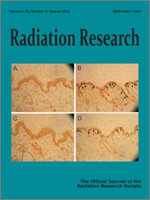Using an experimental model and PENELOPE Monte Carlo simulations, the effects of resin and amalgam on the absorbed doses in tooth enamel were studied to evaluate the feasibility of using restored teeth in electron spin resonance (ESR) dose reconstruction. The model consisted of a phantom containing a plate of these restorative materials placed between powered enamel layers exposed to X rays and a 60Co beam. The experimental results and simulations agreed, showing that the attenuation produced by amalgam and resin with a thickness of 1, 2, and 4 mm is similar to that produced by the enamel itself in the case of the radiation sources employed. For X rays and 60Co γ radiation the attenuation reached almost 100% and 40%, respectively. These results show that for ESR dose reconstruction, the use of all available enamel of a tooth leads to errors in the estimated dose due to attenuation effects in both healthy and restored teeth. Thus the importance of an enamel selection from different sides of the tooth surface to apply ESR dose reconstruction in the case of a practical situation is shown.
How to translate text using browser tools
1 June 2011
Influence of Dental Restorative Materials on ESR Biodosimetry in Tooth Enamel
J. A. Gómez,
T. Marques,
A. Kinoshita,
G. Belmonte,
P. Nicolucci,
O. Baffa
ACCESS THE FULL ARTICLE

Radiation Research
Vol. 176 • No. 2
August 2011
Vol. 176 • No. 2
August 2011




